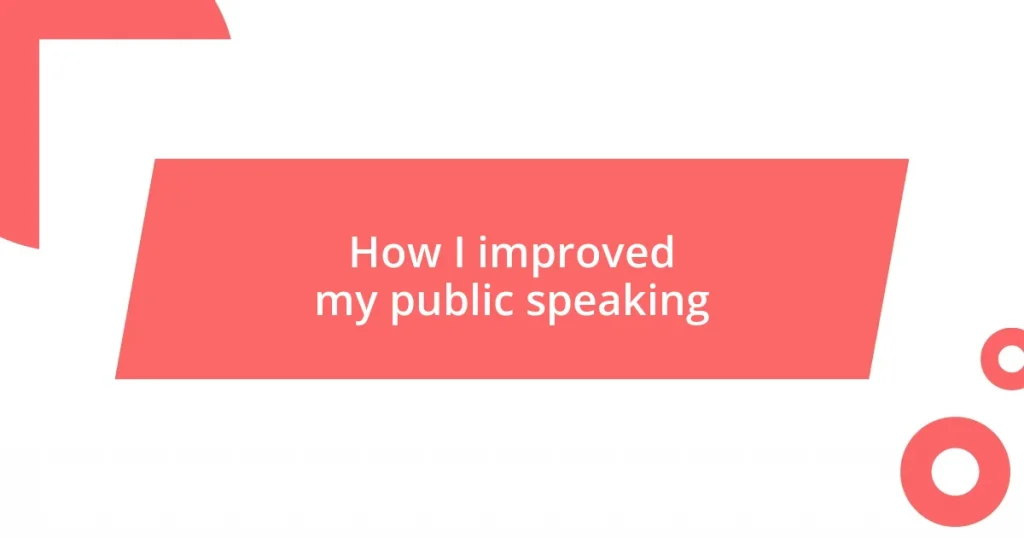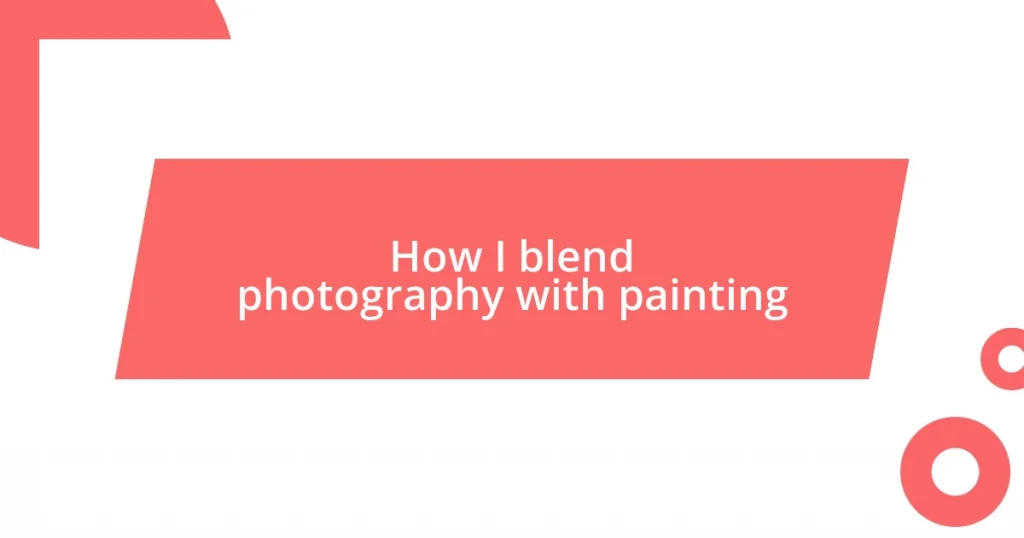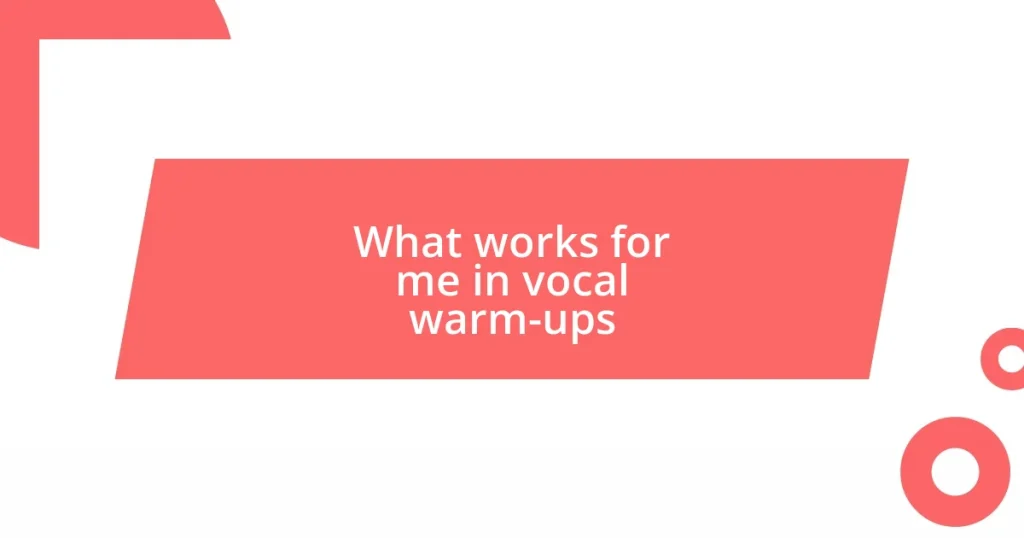Key takeaways:
- Identifying and confronting fears, such as the fear of judgment and forgetting lines, helps shift focus towards genuine self-expression.
- Setting achievable speaking goals, breaking them into smaller steps, and seeking constructive feedback fosters confidence and growth in public speaking skills.
- Preparation and practice, including rehearsing with a friend and evaluating progress, transform anxiety into excitement and enhance delivery.
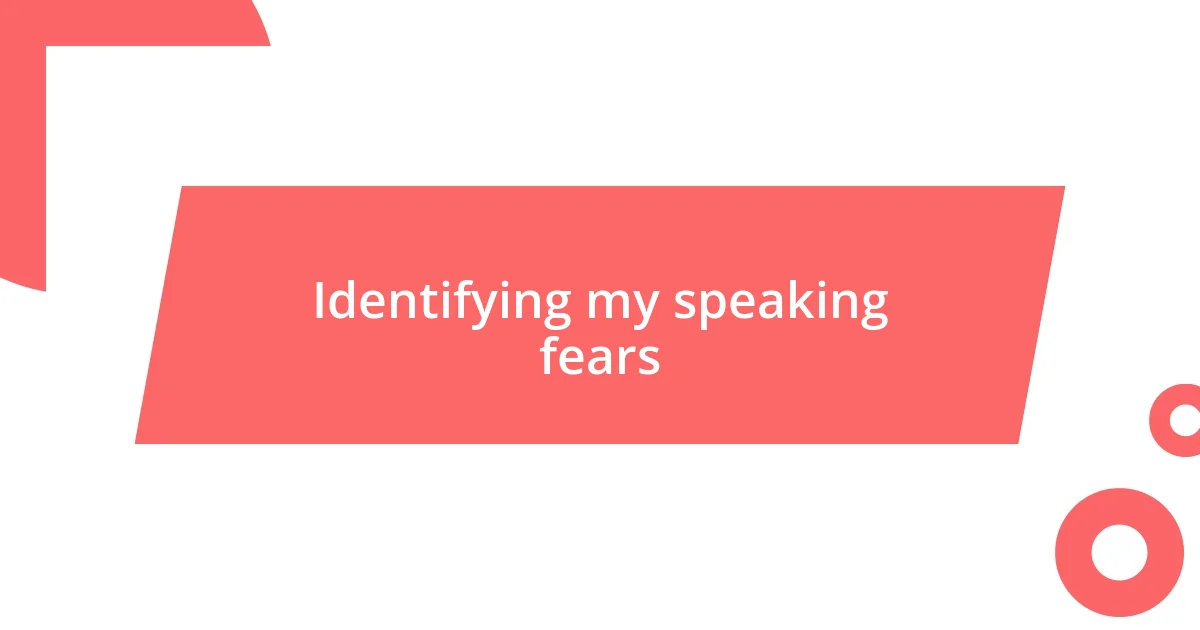
Identifying my speaking fears
When I first started thinking about public speaking, I quickly realized it wasn’t just a fear of stumbling over words. Deep down, I was anxious about what others would think of me. I remember standing in front of a mirror, practicing my speech, and asking myself, “What if they find me boring?” This fear of judgment weighed heavily on my shoulders.
Another fear surfaced during my early practice sessions – the fear of forgetting my lines. I can still picture myself in a crowded room, palms sweaty, heart racing, as I mumbled through my notes. The thought of blanking out was paralyzing, making the very idea of speaking in front of an audience feel like a nightmare. Have you ever had that sinking feeling when you think, “What if I completely forget what to say?” It’s an unsettling experience, and I had to confront it head-on.
Over time, I identified the pressure I placed on myself to be perfect. I found that seeking approval from others only amplified my anxiety. One day, as I was rehearsing a particularly challenging speech, I stopped and asked myself, “Am I really doing this for them or for me?” Recognizing this urgency for external validation helped me understand my fears better, allowing me to shift my focus toward genuine self-expression instead.
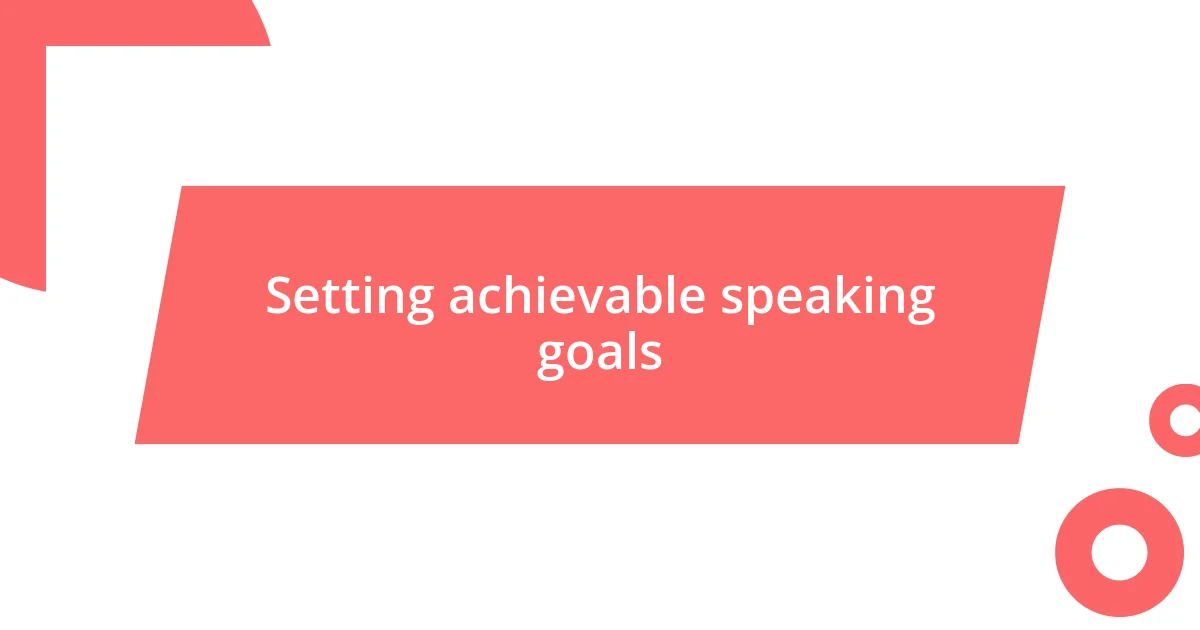
Setting achievable speaking goals
Setting achievable speaking goals is a game-changer in transforming anxiety into confidence. I vividly remember the first time I attempted to set a speaking goal. Instead of aiming for an elaborate 30-minute presentation, I decided to start small: delivering a five-minute talk at a local meetup. It felt manageable and, most importantly, lower-stakes. This approach not only eased my anxiety but allowed me to build on my successes gradually.
Here are some practical tips for setting achievable speaking goals:
- Start with a specific topic: Choose something you’re passionate about to ignite your enthusiasm.
- Define the context: Decide whether you’ll speak in a casual or formal setting.
- Limit the duration: Aim for a short presentation first, like five minutes.
- Get feedback: After each session, ask trusted friends for constructive criticism.
- Set milestones: Break your journey into smaller, manageable steps that lead up to a larger goal.
With these tailored objectives, I learned that public speaking is as much about enjoying the process as it is about delivering a polished performance. Each small win I celebrated was one step closer to conquering my fears and discovering my voice.
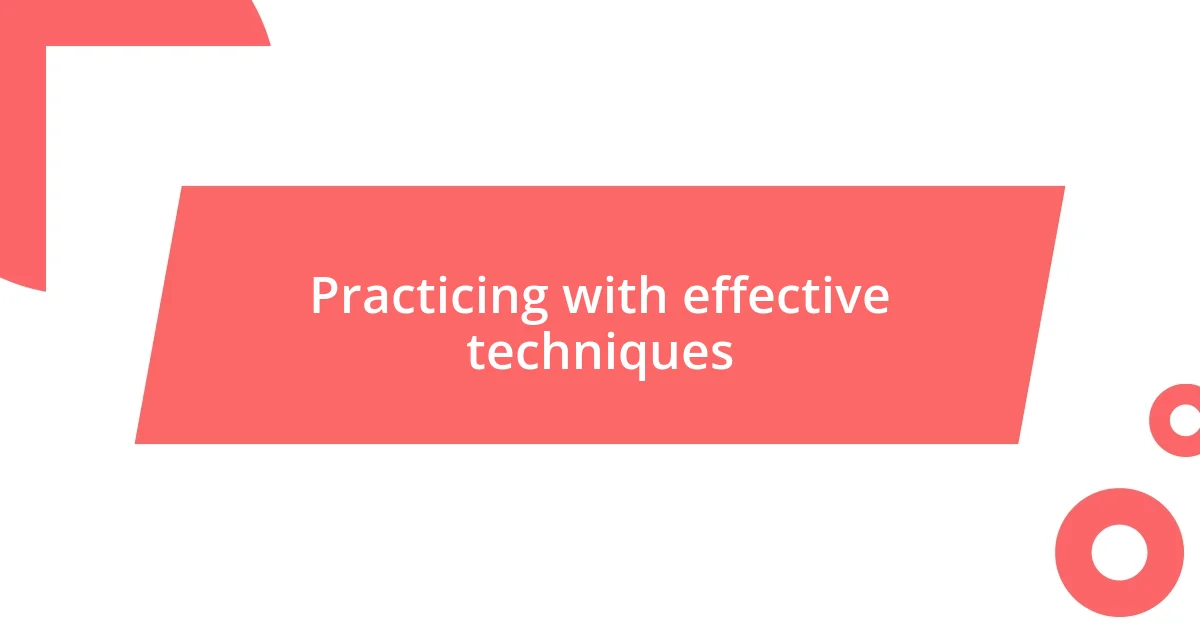
Practicing with effective techniques
When enhancing my public speaking skills, I found that practicing with specific techniques was essential. One method that I couldn’t live without was recording my speeches. I’d set up my phone in a quiet corner and just let it roll. Watching myself back, I noticed quirky habits, like saying “um” too often or pacing back and forth. It was eye-opening! This self-review allowed me to adjust my body language and vocal delivery to connect better with my audience. Have you ever caught yourself doing something unexpected when you speak? It can be a real revelation!
Another effective technique I embraced was joining a local Toastmasters club. The supportive environment encouraged me to step outside my comfort zone. During one meeting, I vividly remember delivering an impromptu speech about my favorite vacation spot. The thrill of thinking on my feet sparked my confidence. What surprised me the most was the sense of camaraderie; we all understood the struggle of public speaking. Practicing in that space transformed my fear into excitement, and I began looking forward to speaking engagements rather than dreading them.
Finally, using visualization techniques helped me immensely. Before significant talks, I’d close my eyes and picture myself on stage, engaging the audience, even imagining their laughter and applause. I remember distinctly a time when I used this method before a large conference. The moment I stepped up to the podium, I felt an overwhelming rush of positive energy. I often ask myself, “Why does this work so well for me?” And the answer is simple: it prepares my mind, setting the stage for success.
| Technique | Description |
|---|---|
| Recording Speeches | Helps identify verbal and physical habits by reviewing performances. |
| Joining Toastmasters | Provides a supportive community to practice and receive constructive feedback. |
| Visualization | Prepares the mind by imagining success and positive audience reactions. |
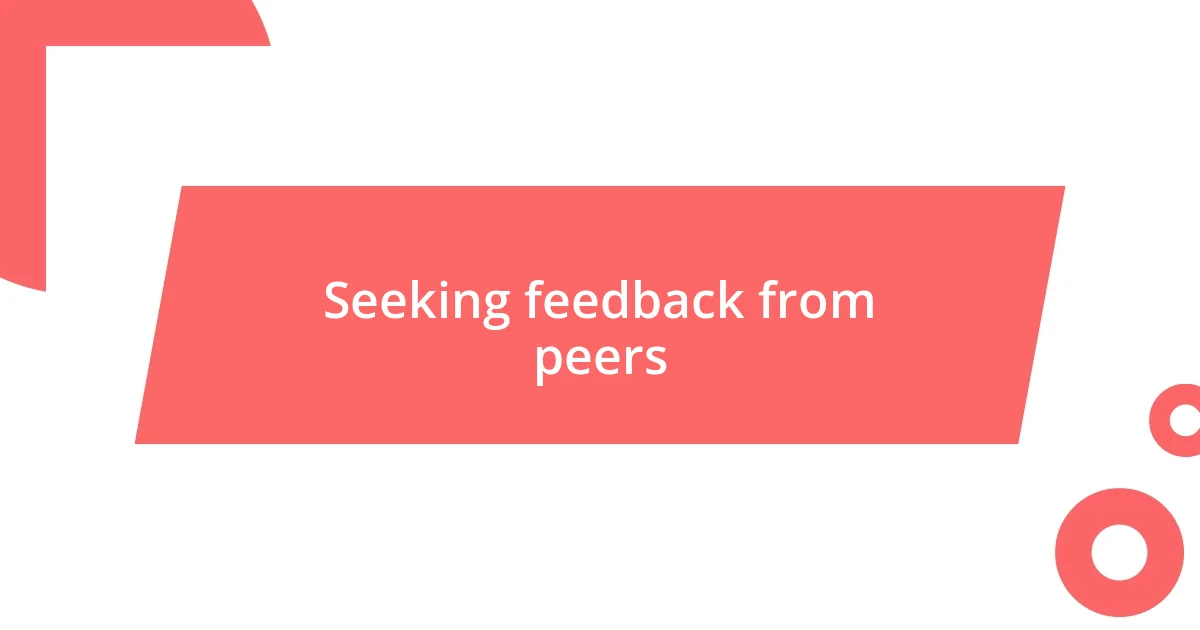
Seeking feedback from peers
Seeking feedback from peers was an eye-opening experience for me. I remember nervously presenting my first draft to a group of friends, silently dreading their reactions. But instead of harsh criticism, they offered insights that I hadn’t even considered. Their constructive feedback shaped my confidence and made me realize that I wasn’t alone in this journey. Have you ever felt that moment of relief when you see that others want to help? It’s incredibly reassuring.
Every time I sought their opinions after a practice session, I noticed a shift in my perspective. Initially, I viewed their feedback as a potential blow to my self-esteem, but soon it became a valuable tool for growth. I began to actively encourage them to point out specific areas for improvement, from my pacing to my tone. One unforgettable piece of advice came from a friend who noted that I tended to lower my voice at crucial points—something I wasn’t aware of. That small change made my storytelling far more impactful. Isn’t it fascinating how others can see things we often overlook?
I also cherished our post-presentation discussions. They weren’t just about negative critiques but also about what worked well. Celebrating those small wins with my peers allowed me to see my progress through their eyes. It turned every feedback session into a collaborative effort, fueling my motivation to refine and enhance my skills. Looking back, I can’t help but think: Without the honest feedback from my peers, would I have made the same strides in my public speaking journey? It’s a thought that reinforces just how integral they were to my development.
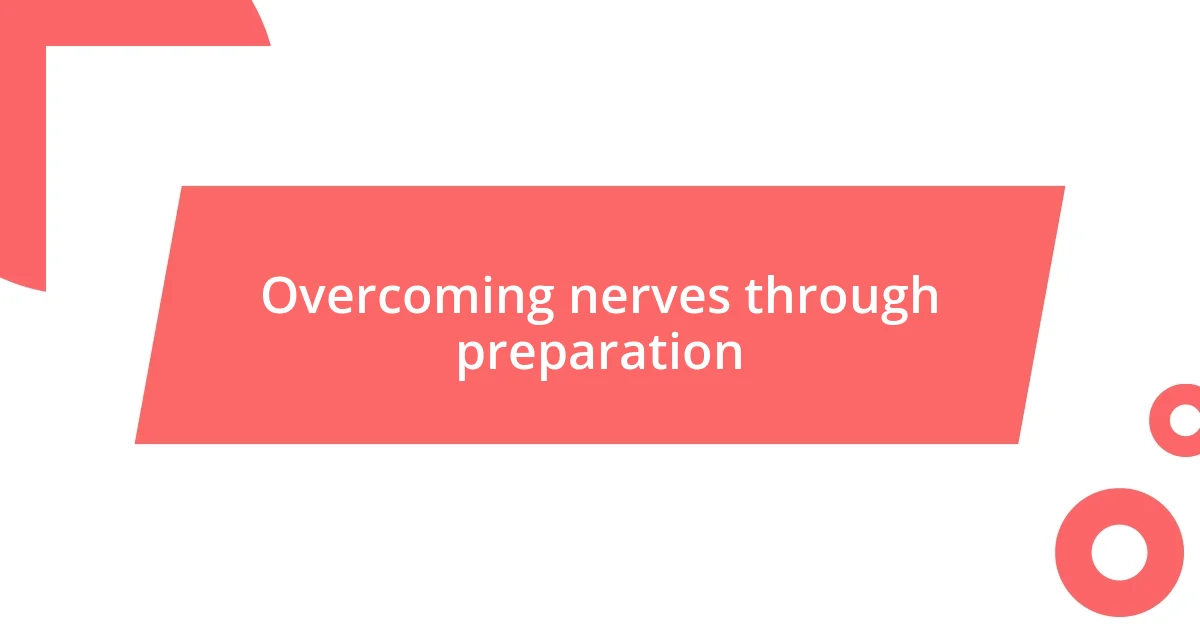
Overcoming nerves through preparation
Preparation was my secret weapon for conquering nerves. I vividly recall a presentation I had to deliver at work that once left me paralyzed with anxiety. To tackle this fear head-on, I spent countless evenings crafting and practicing my content. The more prepared I felt, the lighter my nerves became. Isn’t it incredible how preparation can transform dread into excitement?
I also discovered the beauty of rehearsal in front of a friend. I still remember the night before my big day, standing in our living room with my notes. As I spoke, I could see her nodding, which built my confidence. It was during that session when I realized how rehearsing in a relaxed environment humanized my speech. Have you ever felt a sense of relief just by sharing your thoughts with someone? That connection reminded me that I wasn’t just talking to an audience; I was engaging with people.
Additionally, I took time to anticipate potential questions and challenges. I distinctly remember practicing responses to tough audience questions while pacing in my backyard. Just envisioning those moments prepared me mentally, making my delivery feel smoother and more composed. It’s interesting how practicing for the unexpected can ground you. Do you think facing our fears through preparation makes them less daunting? For me, it absolutely did, laying a solid foundation for success.
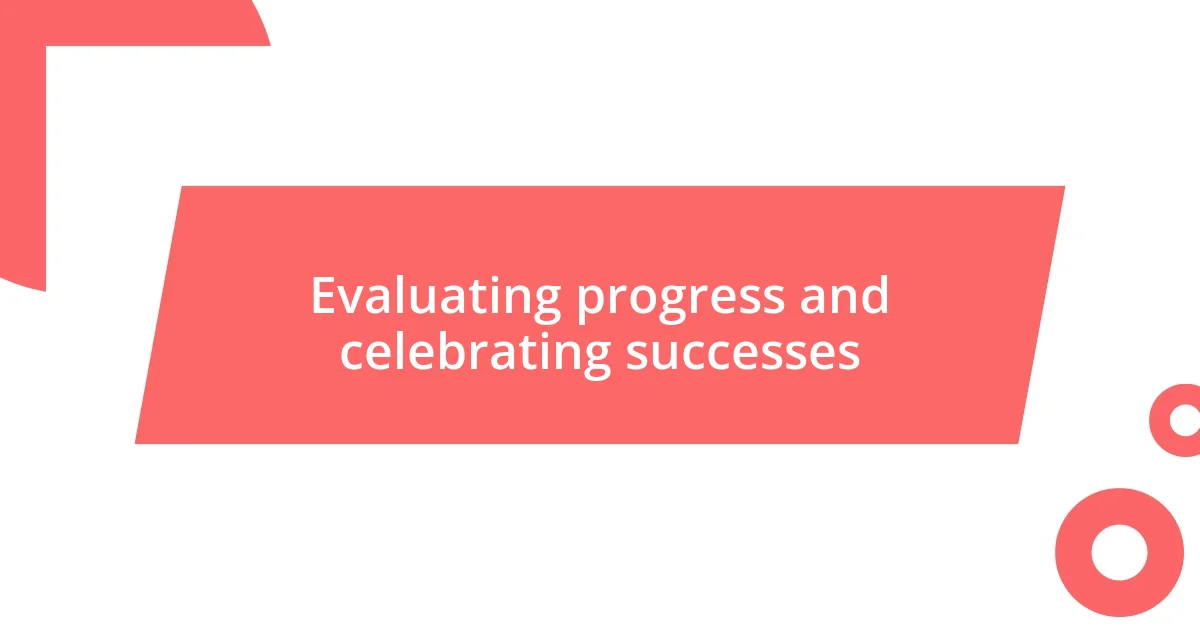
Evaluating progress and celebrating successes
Evaluating my progress was an enlightening journey. I remember the first time I recorded myself speaking; I couldn’t believe the difference between my perception and reality. Listening back, I was surprised by how much I improved over just a few months. It became a regular practice for me—each recording not just a tool for correction, but also a moment to celebrate my growth. Have you ever had a moment when your own progress astonished you?
Reflecting on my successes also involved journaling after each presentation. I still recall one entry after a particularly well-received speech; I wrote about the rush of excitement coursing through me as the audience engaged. That feeling cemented the idea that progress isn’t just measured in skills, but also in confidence and enjoyment. Celebrating these moments, even in small ways—like treating myself to a favorite snack—made every victory feel significant. Do you remember a time when celebrating your achievements motivated you to push further?
Ultimately, I learned that progress doesn’t always look like perfection. For instance, after a minor slip-up during a talk, I debated whether to dwell on it or let it go. Embracing the latter was key—I laughed it off, realizing that my authenticity resonated more than my flaws. This perspective shift allowed me to celebrate not just my triumphs, but also my humanity. Isn’t it remarkable how shifting our focus can lead to greater appreciation for the journey itself?










